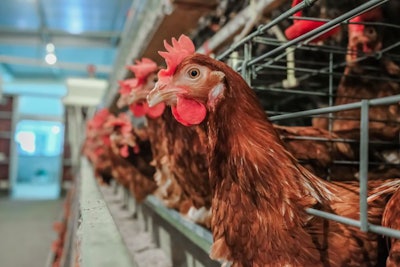
Keep laying hens healthy by keeping an eye one calcium levels
One of the major problems in egg layers is the condition called “layer fatigue.” In other words, it represents the condition where bone structure of legs is so compromised that the layer is seen seated more than standing up.
This is what we would call lameness in other species, although the reason(s) behind it may be slightly different. In layers, the main cause of bone structural deterioration is the replenishment of calcium formations in the bone with fibrous cartilage. After all, bones contain more than 90% calcium in any animal’s body and for layers, bones are the major resource for eggshell calcium when what they manage to retrieve from their feed is inadequate. Below is a short list I am using in my consulting service to help clients avoid this problem, which by the way is almost invariably associated with eggshell quality.
- Ensure layers receive a calcium-rich diet throughout their development life, and especially the two weeks before the onset of layering (weeks 16 to 18). Calcium, often in the form of limestone, is inexpensive, but feeding too much too early can cause problems later in life.
- Throughout the life cycle of the hen, make sure her calcium intake is regulated according to her needs. Calcium in limestone can be quite variable (from 22% up to theoretical 38% in pure calcium carbonate). It is best to use calcium carbonate (more expensive) and second best to use a single-source limestone that can be analyzed. Otherwise, it is advised to buy a large enough quantity of limestone to last a life cycle, collect representative samples and have them analyzed according to source.
- Pay attention to other minerals like phosphorus, magnesium, chlorine and sodium, and also micro-minerals like manganese. Each have a unique role to play (negative or positive) and there are also numerous interactions among them if they are not balanced properly.
- Vitamin D aids in better absorption of calcium, so make sure you use a quality product. Not all vitamin D products are created equal and not only the source, but also the dosage will have an impact.
- The importance of having a good balance between fine and coarse limestone is well known, but what remains little known is that different genetics many have different ratio needs, especially white-egg layers versus brown-egg layers. Your genetics supplier should know best what ratio to use.
- Organic acids when used at the right dosage and timing will help aging hens to retain calcium absorptive capacity, even in the newer genetics where we aim for 500 eggs per life cycle (extended laying period).
These are the basic, starting, guidelines to prevent layer fatigue due to calcium uptake problems. This does not cover other causes, less frequently encountered. But, if you have layers with strong legs to begin with, then neither layer welfare and health nor eggshell quality and productivity will suffer.